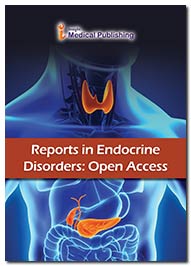A Brief Overview on Turner Syndrome
Lena Joseph
Department of Diagnostic Imaging, University of Vergata, Italy
Abstract
TurnerSyndrome(TS),alsoknownas45,X,or45,X0,isainheritable condition in which a lady is incompletely or fully missing an X chromosome. Signs and symptoms vary among those affected. Frequently, a short and webbed neck, low-set cognizance, low hairline at the reverse of the neck, short elevation, and blown hands and bases are seen at birth. Generally, those affected don't develop menstrual ages and guts without hormone treatment and are unfit to have children without reproductive technology. Heart blights, diabetes, and low thyroid hormone do in the complaint more constantly than average. Utmost people with TS have normal intelligence; still, numerous have problems with spatial visualization that may be demanded in order to learn mathematics. Vision and hail problems also do more frequently than average
TurnerSyndrome(TS),alsoknownas45,X,or45,X0,isainheritable condition in which a lady is incompletely or fully missing an X chromosome. Signs and symptoms vary among those affected. Frequently, a short and webbed neck, low-set cognizance, low hairline at the reverse of the neck, short elevation, and blown hands and bases are seen at birth. Generally, those affected don't develop menstrual ages and guts without hormone treatment and are unfit to have children without reproductive technology. Heart blights, diabetes, and low thyroid hormone do in the complaint more constantly than average. Utmost people with TS have normal intelligence; still, numerous have problems with spatial visualization that may be demanded in order to learn mathematics. Vision and hail problems also do more frequently than average
Turner pattern isn't generally inherited; rather, it occurs during conformation of the reproductive cells in a parent or in early cell division during development. No environmental pitfalls are known, and the mama's age doesn't play a part. Turner pattern is due to a chromosomal abnormality in which all or part of one of the X chromosomes is missing or altered. While utmost people have 46 chromosomes, people with TS generally have 45 in some or all cells. The chromosomal abnormality is frequently present in just some cells, in which case it's known as TS with mosaicism. In these cases the symptoms are generally smaller, and conceivably none do at all. Opinion is grounded on physical signs and inheritable testing
No cure for Turner pattern is known. Treatment may help with symptoms. Mortal growth hormone injections during nonage may increase adult height. Estrogen relief remedy can promote development of the guts and hips. Medical care is frequently needed to manage other health problems with which TS is associated
Turner pattern occurs in between one in and one in ladies at birth. All regions of the world and societies are affected about inversely. Generally peoplewith TS have a shorterlife expectation, substantially due to heart problems and diabetes. American endocrinologist Henry Turner first described the condition in 1938. In 1964, it was determined to be due to a chromosomal abnormality. Turner pattern has a number of physical and cerebral impacts, including short elevation, heart blights, neck netting, delayed or absent puberty, and gravidity. The phenotype of Turner pattern is affected by mosaicism, where cell lines with a single coitus chromosome are combined with those with multiple. Around 40 – 50 of cases of Turner pattern are true"monosomy X"with a 45, X0 karyotype, while the remainder are mosaic for another cell line, utmost generally 46, XX, or have otherstructural abnormalities of the X chromosome. The classic features of Turner pattern, while distinctive, may be rarer than preliminarily allowed; incidental opinion, similar as in biobank samples or antenatal testing for aged maters, finds numerous girls and women with many traditional signs of Turner pattern.
Growth detention in Turner pattern doesn't begin at birth; most babes with the condition have a birth weight in the lower end of the normal range. Height begins to lag in toddlerhood, with a delayed growth haste getting apparent as early as 18 months. When girls with Turner pattern begin academy, their height is generally still not remarkably unusual; pronounced short elevation becomes egregious in mid-childhood. In undiagnosed preadolescents and adolescents, growth detention may be incorrect for a side effect of delayed puberty and inaptly treated. Short elevation in Turner pattern and its negation, altitudinous elevation in coitus chromosome polysomy conditions similar as Klinefelter pattern, XYY pattern, and trisomy X, is caused by the short- elevation homeobox gene on the X and Y chromosomes
Open Access Journals
- Aquaculture & Veterinary Science
- Chemistry & Chemical Sciences
- Clinical Sciences
- Engineering
- General Science
- Genetics & Molecular Biology
- Health Care & Nursing
- Immunology & Microbiology
- Materials Science
- Mathematics & Physics
- Medical Sciences
- Neurology & Psychiatry
- Oncology & Cancer Science
- Pharmaceutical Sciences
